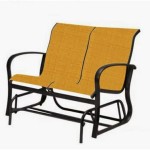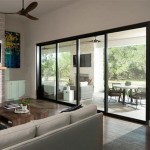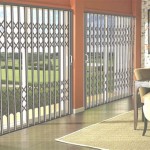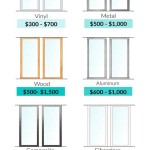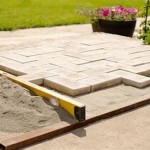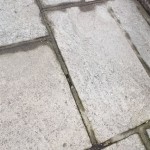Cost to Install Bluestone Patio: A Comprehensive Guide to Square Foot Pricing
Bluestone patios offer a sophisticated and durable outdoor living space. The natural variations in color and texture create a visually appealing surface that can complement a variety of architectural styles. Understanding the cost associated with a bluestone patio installation is crucial for homeowners planning to enhance their property. This article provides a detailed breakdown of the factors influencing the cost per square foot of a bluestone patio, allowing for informed budgeting and decision-making.
The cost to install a bluestone patio per square foot is influenced by several interacting variables, including the type of bluestone used, the complexity of the installation, site preparation requirements, labor costs within the specific geographic region, and the inclusion of additional features. A comprehensive understanding of these factors is necessary to accurately estimate the overall project expense.
Type and Thickness of Bluestone
The type of bluestone selected significantly impacts the overall cost per square foot. Bluestone is available in various forms, each possessing unique characteristics and price points. Two common types of bluestone are full-color bluestone and select blue-blue bluestone.
Full-color bluestone, as the name suggests, exhibits a range of colors, including blues, browns, grays, and rust tones. This variation adds visual interest but generally comes at a lower price point compared to select blue-blue bluestone. The diverse color palette allows for flexibility in design and can blend seamlessly with existing landscaping.
Select blue-blue bluestone, on the other hand, is characterized by its consistent and predominantly blue-gray hue. This uniformity creates a more formal and contemporary aesthetic. Due to its more selective sourcing and consistent coloration, select blue-blue bluestone typically commands a higher price per square foot.
Beyond the color variations, the thickness of the bluestone also affects the cost. Bluestone pavers are typically available in thicknesses ranging from 1 inch to 2 inches. Thicker pavers are generally more durable and suitable for areas with heavy foot traffic or potential vehicular access. However, thicker pavers also require more material and labor, thus increasing the cost per square foot. Therefore, selecting the appropriate thickness based on the intended use of the patio is crucial for balancing cost and durability.
The shape of the bluestone (irregular or patterned) will also affect the cost. Irregular flagstone requires more labor to fit together, increasing the installation cost. Patterned bluestone, such as squares or rectangles, can be less costly to install due to its consistent shape. However, the material cost of patterned bluestone may be higher due to the precision cutting required during production.
Site Preparation and Installation Complexity
The condition of the existing site and the complexity of the patio design play a significant role in determining the overall cost per square foot. Before installing bluestone, proper site preparation is essential to ensure a stable and long-lasting patio. This often involves excavation, grading, and the installation of a compacted base material.
If the existing site is uneven or contains obstacles such as tree roots or large rocks, additional excavation and leveling will be required. This can significantly increase the labor and material costs. In some cases, retaining walls or other structural elements may be necessary to address grade changes or soil instability, further adding to the expense.
The complexity of the patio design also affects the installation cost. Simple, rectangular patios are generally less expensive to install than more intricate designs with curves, angles, or multiple levels. Complex designs require more precise cutting and fitting of the bluestone, which increases the labor time and expertise needed. Additionally, features such as built-in seating, fire pits, or outdoor kitchens add to the complexity and cost of the project.
The type of base used for the patio also impacts the cost. A compacted gravel base is a common and relatively inexpensive option. However, in areas with poor drainage or unstable soil, a more robust base, such as a concrete slab, may be necessary. While a concrete base provides superior stability, it also adds significantly to the material and labor costs.
Labor Costs and Geographic Location
Labor costs constitute a substantial portion of the overall expense of a bluestone patio installation. These costs can vary significantly depending on the geographic location, the experience and expertise of the contractor, and the prevailing wage rates in the area. Areas with a higher cost of living generally have higher labor rates.
Experienced and reputable contractors typically charge more for their services due to their expertise and ability to deliver high-quality workmanship. While it may be tempting to opt for a cheaper contractor, it is important to consider the potential risks of hiring an inexperienced or unqualified individual. Poorly installed bluestone patios can lead to problems such as uneven surfaces, cracked pavers, and drainage issues, which can be costly to repair in the long run.
Obtaining multiple quotes from different contractors is crucial for comparing prices and ensuring that the proposed cost is reasonable. It is essential to carefully review each quote and understand what is included in the price, such as site preparation, material costs, and labor. A reputable contractor will provide a detailed breakdown of the estimated costs and be transparent about any potential additional charges.
Beyond the base labor rate, additional labor costs may arise due to specific project requirements. For example, if the bluestone pavers need to be transported a significant distance from the delivery point to the installation site, additional labor may be required. Similarly, if the installation site is difficult to access or requires specialized equipment, this can also increase labor costs.
The method used to set the bluestone also impacts labor costs. Setting bluestone in a sand bed is generally less expensive than setting it in mortar. Mortar-set bluestone requires more skilled labor and a longer installation time, but it also provides a more durable and stable surface.
Additional Features and Considerations
Beyond the core installation costs, homeowners may choose to incorporate additional features into their bluestone patio, which can significantly impact the overall expense. These features may include integrated lighting, built-in seating, fire pits, outdoor kitchens, or decorative edging.
Integrated lighting can enhance the ambiance of the patio and provide illumination for nighttime use. Lighting options range from simple pathway lights to more sophisticated accent lighting that highlights architectural features or landscaping. The cost of lighting will depend on the type of fixtures selected and the complexity of the wiring installation.
Built-in seating can create a comfortable and inviting space for relaxation and entertaining. Seating can be constructed from various materials, such as bluestone, brick, or wood. The cost will depend on the size and design of the seating area, as well as the materials used.
Fire pits are a popular addition to bluestone patios, providing warmth and a focal point for gatherings. Fire pits can be either wood-burning or gas-fueled. The cost will depend on the size and design of the fire pit, as well as the fuel source and any necessary gas line installation.
Outdoor kitchens can transform a bluestone patio into a fully functional outdoor living space. Outdoor kitchens can include features such as grills, countertops, sinks, and refrigerators. The cost will depend on the size and complexity of the kitchen, as well as the appliances and materials used.
Decorative edging can add a finishing touch to a bluestone patio and define its boundaries. Edging can be constructed from various materials, such as bluestone, brick, or concrete pavers. The cost will depend on the type of edging selected and the length of the perimeter.
Other considerations that can influence the overall cost include permit fees, landscaping costs, and the disposal of debris. Obtaining necessary permits is essential to ensure compliance with local building codes. Landscaping can enhance the overall aesthetic of the patio and create a cohesive outdoor living space. The disposal of debris generated during the installation process can also add to the cost.
In summary, the cost to install a bluestone patio per square foot is a multifaceted calculation influenced by the type of bluestone, the complexity of the installation, site preparation requirements, labor costs, and the inclusion of additional features. Meticulous planning, obtaining multiple quotes from qualified contractors, and a clear understanding of the associated costs are crucial for achieving a successful and budget-conscious bluestone patio installation.

How Much Does Bluestone Cost 2024 S

2024 Bluestone Patio Cost S Per Square Foot

2024 Bluestone Patio Cost S Per Square Foot

2024 Bluestone Patio Cost S Per Square Foot

Discover Bluestone Patio Costs Per Square Foot S

Discover Bluestone Patio Costs Per Square Foot S
How Much Does Bluestone Cost A Guide Sierra Landscape Management Llc

2024 Bluestone Patio Cost S Per Square Foot

Discover Bluestone Patio Costs Per Square Foot S

Our Bluestone Patio And How It Can Work For You Chrissy Marie Blog
Related Posts

